1981 Quarter Value: How Much Is It Worth Today?
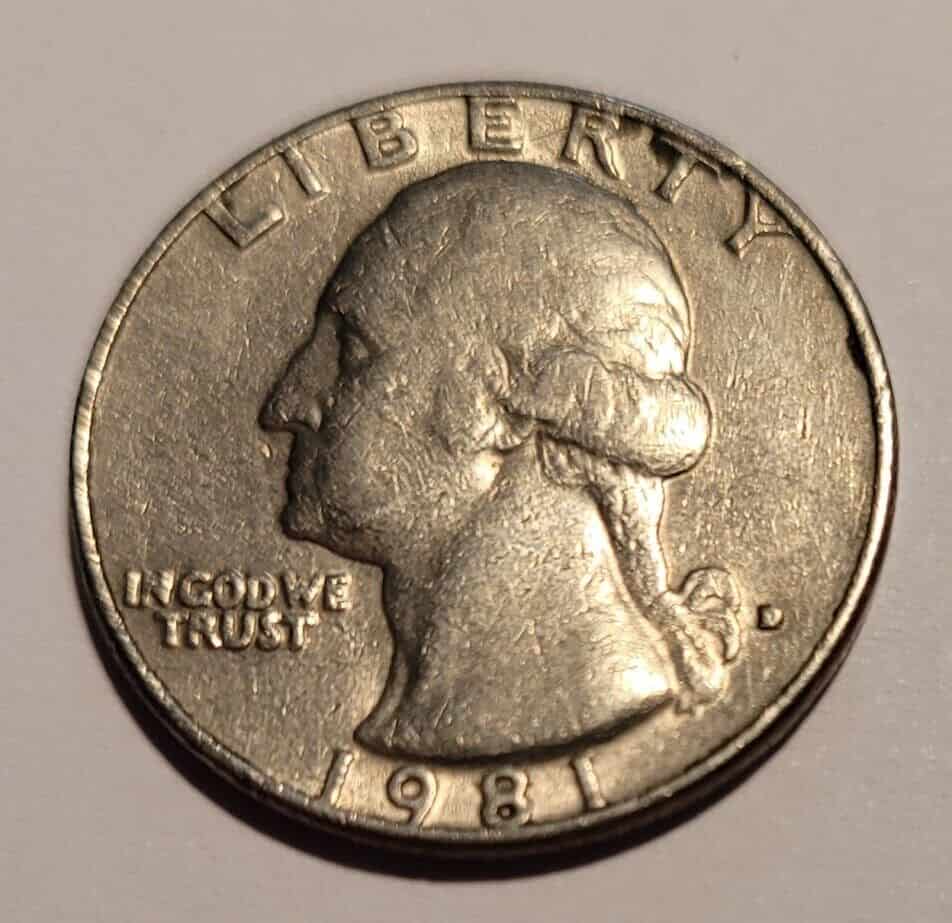
Coin collecting has become more than just a hobby. Some pursue this because of the historical value of coins while others see this as a long-term investment. Whatever your reasons are, it’s important that you are well-versed in the basics of coin collecting.
With the help of our guide, you attain key information about the latest 1981 quarter value. We will also list down the different coin varieties according to their mint mark as well as other major errors during the year’s production. Now, let’s start off with the value chart.
1981 Quarter Value Chart |
|||||
| Mint Mark | Good | MS 63 | MS 65 | MS 67 | PR 67 |
| 1981 P Quarter Value | $0.30 | ― | $6.81 | ― | ― |
| 1981 D Quarter Value | $0.30 | $5 | $10 | $50 | ― |
| 1981 S Quarter Value | ― | ― | ― | ― | $4 to $7 |
1981 P Quarter Value
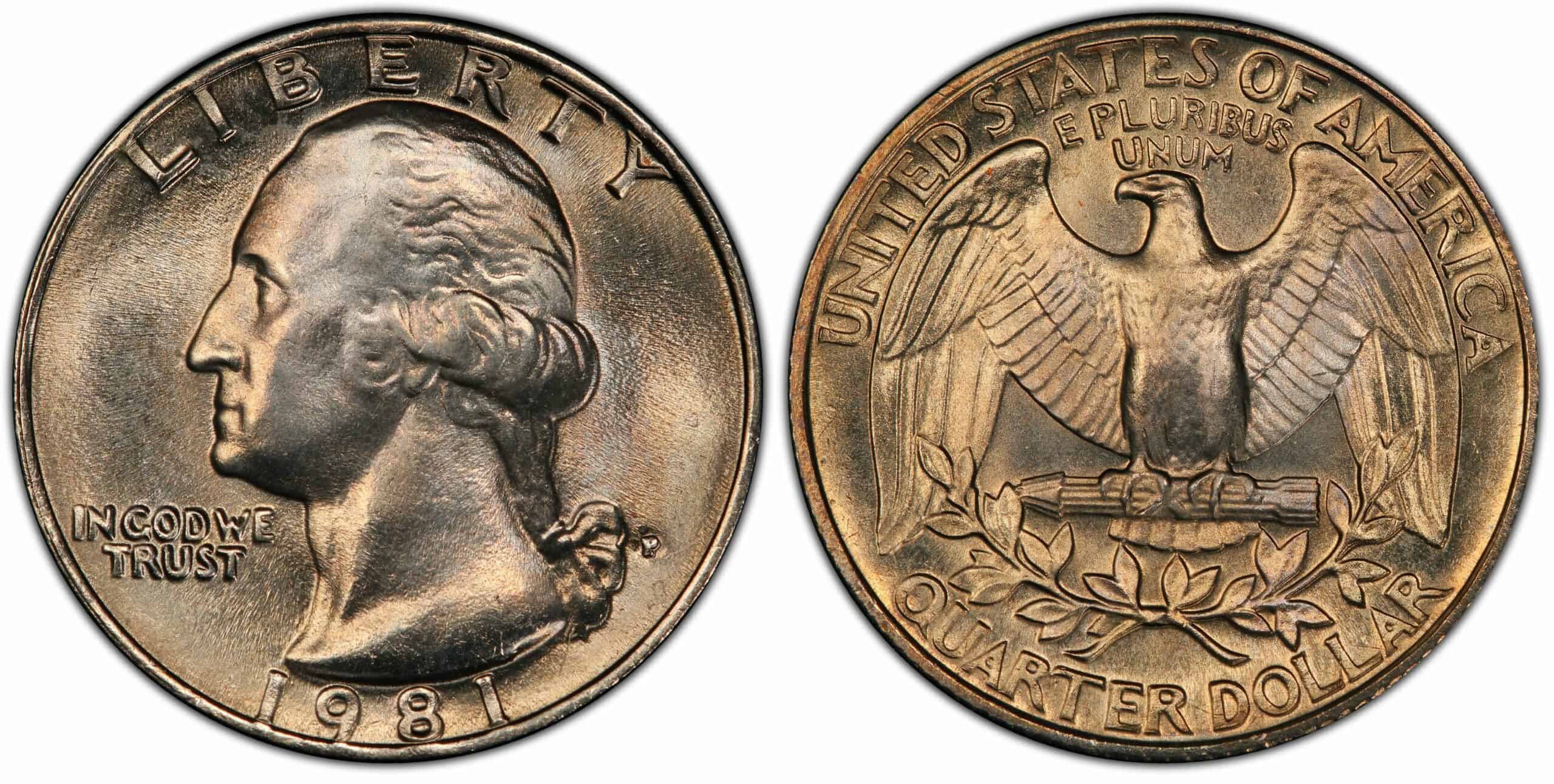
Philadelphia is one of the major mint sources of US coins for the past decades. In fact, as the country’s first mint, it has produced billions of coins over the years. Aside from coins, the city also created medals and other relevant awards that are utilized by the government and military.
Then, in 1981, it had a huge role in producing Washington quarters for circulation. The total number of coins manufactured was 601,716,000, and most of these were widely used by the public for daily dealings.
In the past, there is no mint mark for coins struck in Philadelphia. But this was changed in 1980. This means that the quarters released in 1981 already have the “P” mark on the coin, specifically on the obverse side of the coin.
According to experts, the reason why Philadelphia-minted coins did not have mint marks was because of the low silver supply during that period. The government had to establish ways to limit collectors from using coins for their personal collection, and this was one of the most useful techniques.
Aside from the no mint mark on the coins, the US Mint also had to remove silver from the material composition. As a result, silver was replaced with copper and nickel to create a cupronickel composition for the planchet.
So, 1981 P quarters are slightly lighter compared to coins that were released before 1965. These only measure 5.67g, with a coin diameter of 24.3 mm and coin thickness of 1.75 mm. On the other hand, the design of these coins did not falter even with the passing of time.
The original design was made by John Flanagan. However, before the approval of Flanagan’s work, the Committee actually picked the creation outlined by Laura Gardin Fraser. Unfortunately, Andrew Mellon, who was the treasury secretary back then, opted for Flanagan.
So, the design that you’d see in the 1981 Quarter is the creation made by John Flanagan. These contain the portrait of the first president of the United States, George Washington, as well as an outline of the famous American bald eagle.
Important words and mottos are also incorporated into the coin. These include “IN GOD WE TRUST” and “LIBERTY” on the front while “E PLURIBUS UNUM”, “QUARTER DOLLAR”, and UNITED STATES OF AMERICA” on the back. And of course, the year of printing is engraved on the coin too.
Since there were millions of 1981 P quarters, you won’t have a hard time acquiring one. Consequently, this has an impact on the valuation of the coins. Generally, these are cheaper, not exceeding $0.30 for coins in good condition. But if you’re lucky to have an MS 65, the price is around $6.81.
1981 D Quarter Value
Aside from Philadelphia, Denver is also a primary minting location in the US. And in 1981, it produced over 500 million coins that were widely distributed to the public for circulation purposes. The amount produced during this year isn’t much different from the number of coins released in 1980.
Because of the abundance in production, these are still available in the market even up to the present. And since the coins are generally not considered rare, most 1980 D quarters, just like Philadelphia-minted coins, are not that pricey―unless the coin comes with unique features due to errors.
Pieces that are in good condition only sell up to $0.30 while mint state coins can be priced higher. The value, however, depends on the grade. For instance, coins with MS 63 are estimated to be around $5. An MS 65, on the other hand, can be traded for approximately $10 and MS 63 can reach up to $50.
Meanwhile, the design of the 1980 D quarters mimics other Washington quarters. The front section features the image of George Washington and some markings like “LIBERTY” and the well-known US motto “IN GOD WE TRUST.” This particular saying has been the official US motto since 1965.
Also engraved on the obverse is the year of minting, which is 1981. And since these coins were struck in Denver, you can find the “D” mint mark too. It is stationed on the right side, beside the hair bow worn by Washington.
Meanwhile, there isn’t a significant difference in the reverse designs. It still encompassed the national bird of the country, which is the American Bald Eagle with outspread wings.
And of course, other major elements like the set of arrows clasped by the eagle as well as the olive branches below the arrow are retained. Each of these components is relevant to the country’s history, hence its visibility in most US coin series.
1981 S Quarter Value
San Francisco also took part in the production of Washington Quarters in 1981. During this year, they manufactured a total of 4,063,083 pieces, which were all proof specimens. And when we say proof coins, these are commemorative pieces that are usually designed for collectors.
The reason for such is because of the level of craftsmanship incorporated to create these coins. These coins are normally struck at least twice to create exceptional features such as sharp details and a polished appearance.
Because of the enhanced façade of the coins, proof specimens are way more valuable than standard, circulated ones. Accordingly, the price range of these coins is different as it depends on the type of the proof coin.
There are actually two types of 1981 S quarters, and these take into account the mint mark, which is the letter “S”. So, for the first type, these are the coins that have filled-type S, resulting in an unclear mint mark. On the other hand, the second type is the well-defined S mark that clearly outlined the letter.
Checking this aspect is important as this impacts the worth of the coin. In terms of valuation, the second type with a clear mint mark is more desirable among collectors, hence higher in value. And of course, the condition of the coin influences the price as well.
The lowest grade recorded for a 1981 S quarter was PR 67, and it was sold between $4 to $7. For high-grade coins such as PR 68 and PR 69, this would be estimated to be around $6 to $15. And for a PR 70 coin, you can expect a better price, perhaps starting from $22 up to $145.
However, PR 70 specimens are very rare. It’s because these coins are beautifully maintained, fully-struck pieces with lustrous features. Not only that but these are free of visual flaws. Therefore, you are definitely blessed with good luck if you have this in your possession.
1981 Quarter Grading
Coins that were struck in the year 1981 are not that difficult to grade. Aside from the condition of the coin, you only need to check the mint mark. Generally, San Francisco-minted specimens are better priced because these were originally not meant for circulation.
Yet even with the general conception of proof coins to be more valuable, there are other factors to consider as well. And this is about the errors found in each coin. Imperfections caused by production lapses or workers’ incompetency can actually help in boosting the value of a coin.
1981 Quarter Error Lists
Over a billion coins were minted across three US mints. Due to the large number of Washington quarters created in 1981, errors were somehow inevitable. And as a coin collector, whether a beginner or a connoisseur, you should know that errors are relevant factors when appraising a coin’s worth.
So, let’s have a closer look into the common problems during the minting of the 1981 George Quarters. Don’t worry because we will explain each error thoroughly for guidance.
1. 1981 Quarter Doubled Die
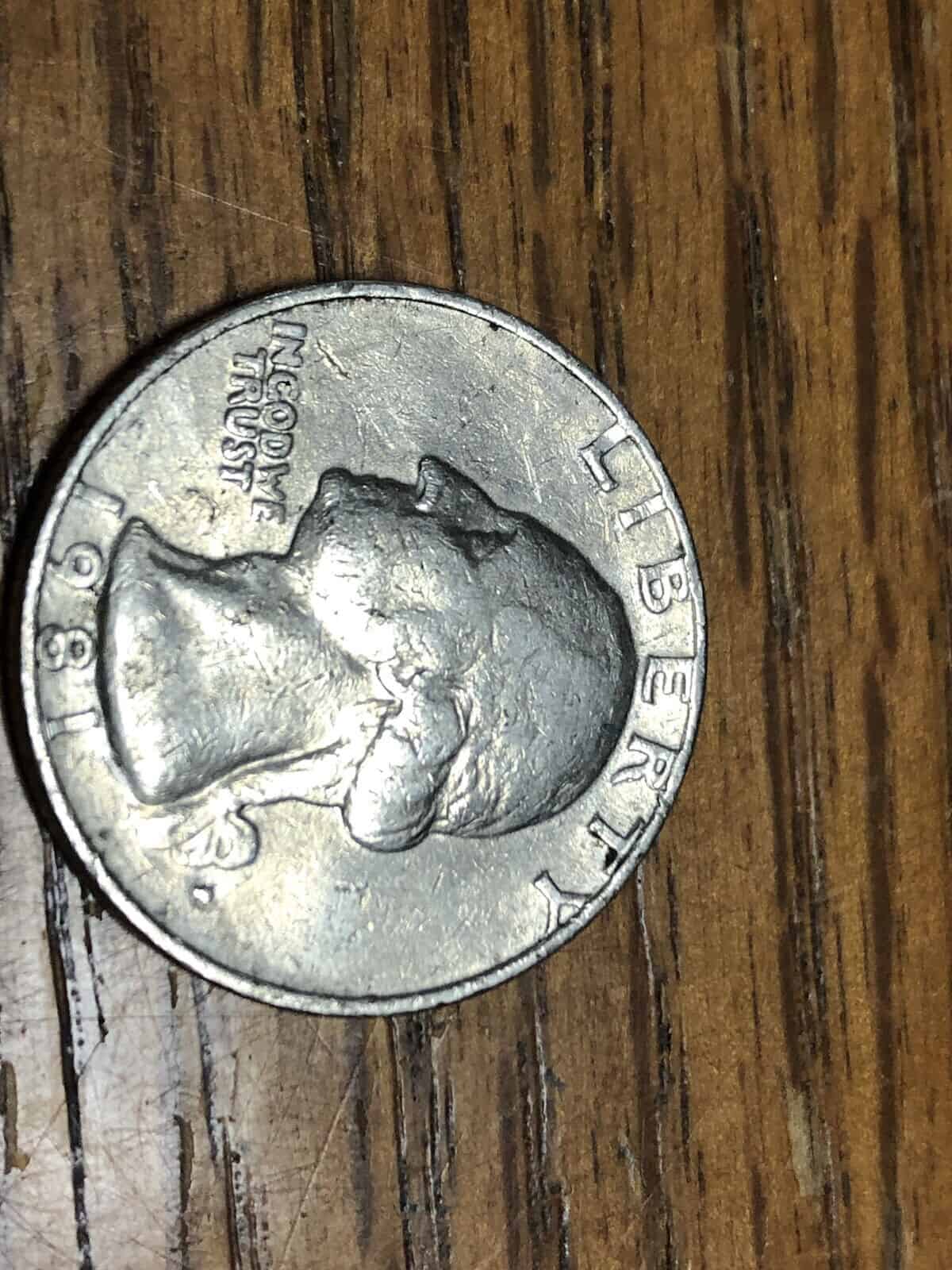
A double die is perhaps the most popular coin error, which materializes when a planchet is struck more than once at different angles. This results in designs slightly or fully doubled, depending on the manner of striking the die. And experts believe that coins with very visible doubling marks are pricier.
Thus, if you have this kind of coin, might as well keep it for your collection and not use it for circulation. It’s because you’d be able to make use of this error to get a better price.
2. 1981 Quarter Off-center
Another common error during coin production is none other than off-center problems. When the die is not properly aligned to the center of the planchet, there’s a high tendency of designs not fully engraved into the surface.
Likewise, this error leads to a blank section on a certain part of the planchet. Grading off-centered coins factors in the percentage from the center.
Therefore, if the center elements (the portrait of Washington on the obverse and the American bald eagle on the reverse) are very far from the center, then consider yourself fortunate. It’s because coins that are very far from the center with more missing designs are rare.
3.1981 Quarter Filled-in Mint Marks
We’ve mentioned earlier that proof coins from San Francisco are generally categorized into two types, according to the manner in which the mint mark is engraved into the coin. However, there were some coins manufactured in Philadelphia and Denver that bore the same issue.
Unfortunately, this particular error does not have a significant effect on the valuation of the 1981 P and D quarters, unlike San Francisco-proof coins. Therefore, you should focus more on the condition of the coins as well as other key errors.
4. 1981 Quarter Struck on a Wrong Planchet
From a dime planchet to a five-cent surface, there were instances when 1981 quarters used the wrong planchet. Because of this error, there is a visible flaw in the design. One could be the markings much closer to the edge due to the incorrect size.
But just like all other coin errors, you won’t have to worry about this one because this actually helps in increasing its value. Some are willing to shell up to $100 to get a hold of this rare piece.
1981 Quarter FAQ
1. How much is a 1981 quarter worth now?
The worth of a 1981 quarter largely depends on their current condition. Circulated pieces in good condition are only slightly higher than their face value, approximately $0.30. On the other hand, mint-state pieces may be around $5 or $50.
Also, you need to consider if the coins are proof specimens because these are sold higher. Most of these are appraised to be worth $4 or $7. Lastly, the errors are also relevant elements to determine its cost.
2. Is a 1981 quarter rare?
No, 1981 quarters are typically not considered rare. One main reason is the millions of coins produced from different mint locations. Likewise, most of there were publicly used. Hence, there’s no element of rarity in these coins, unless they contain unique features due to error.
So, if you come across a certain flaw on your coin, perhaps an off-center design or double die markings, then you better hang on to this piece. Why? It’s because this could be a rare item that would surely pay more than the normal price.
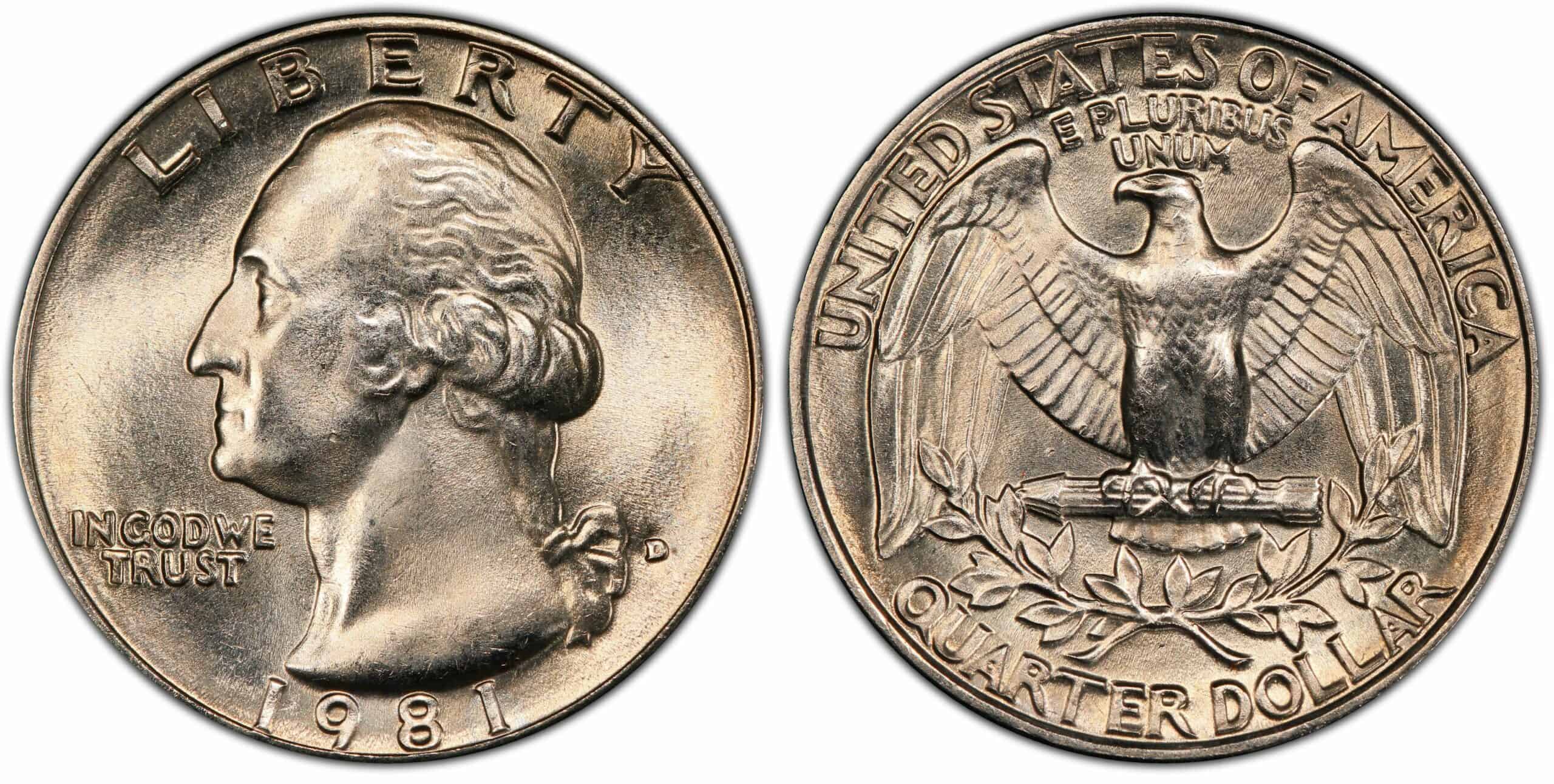
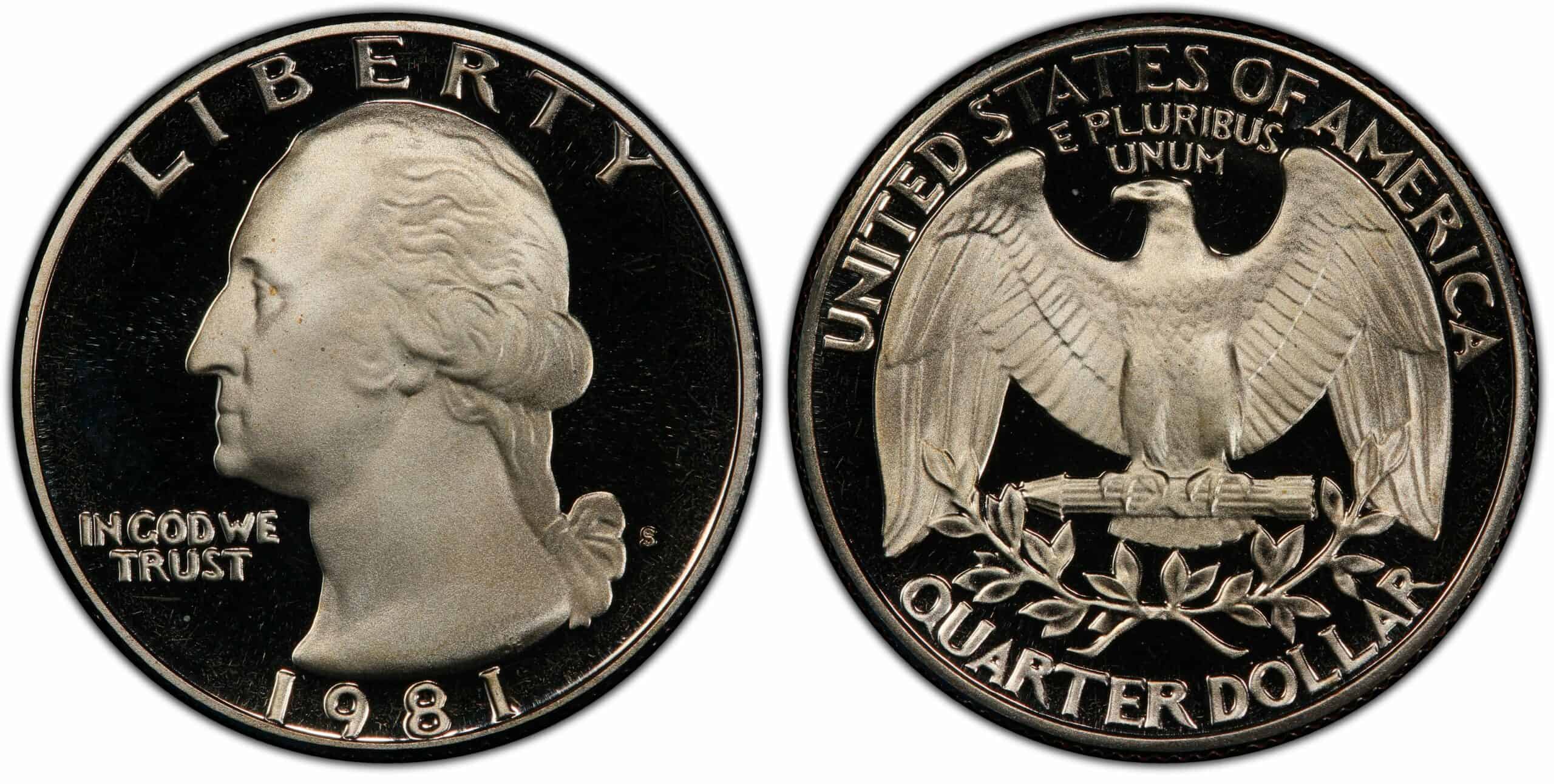
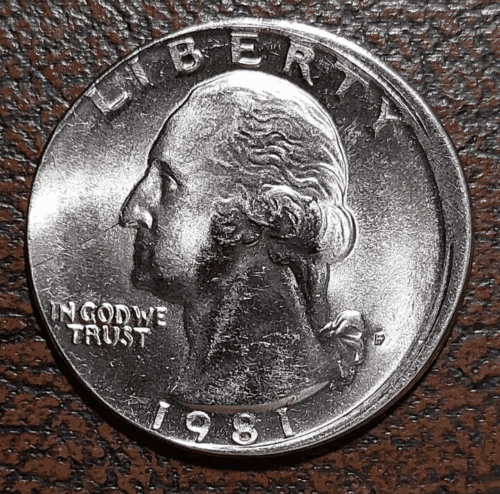
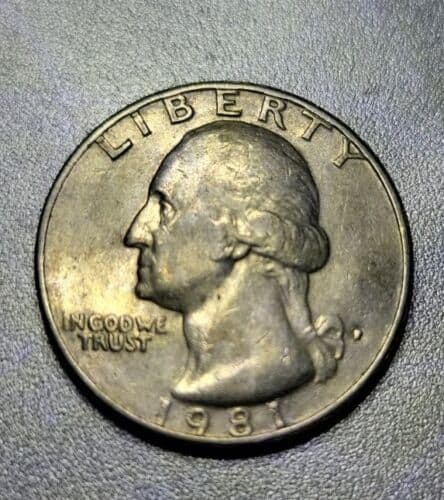
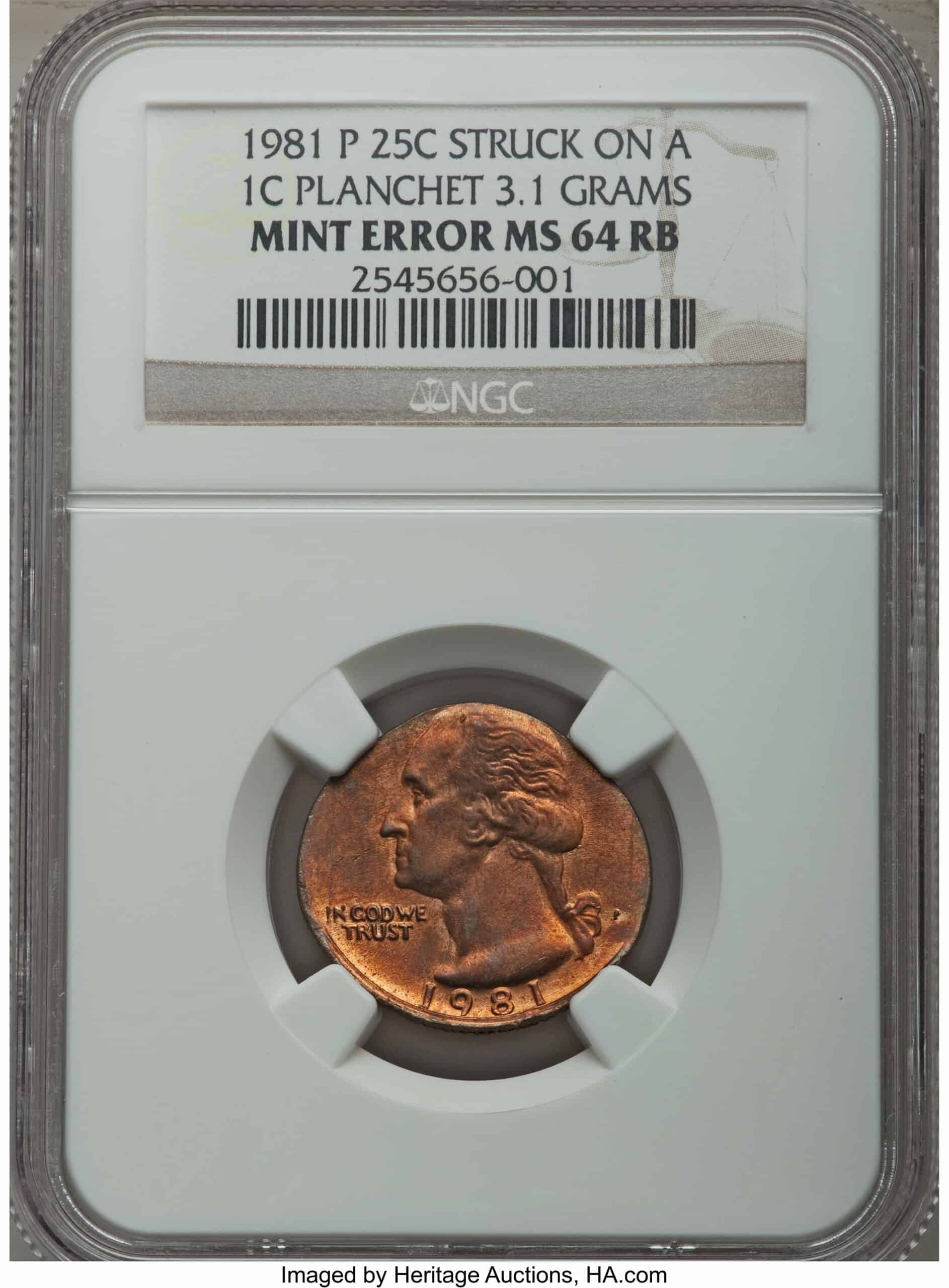
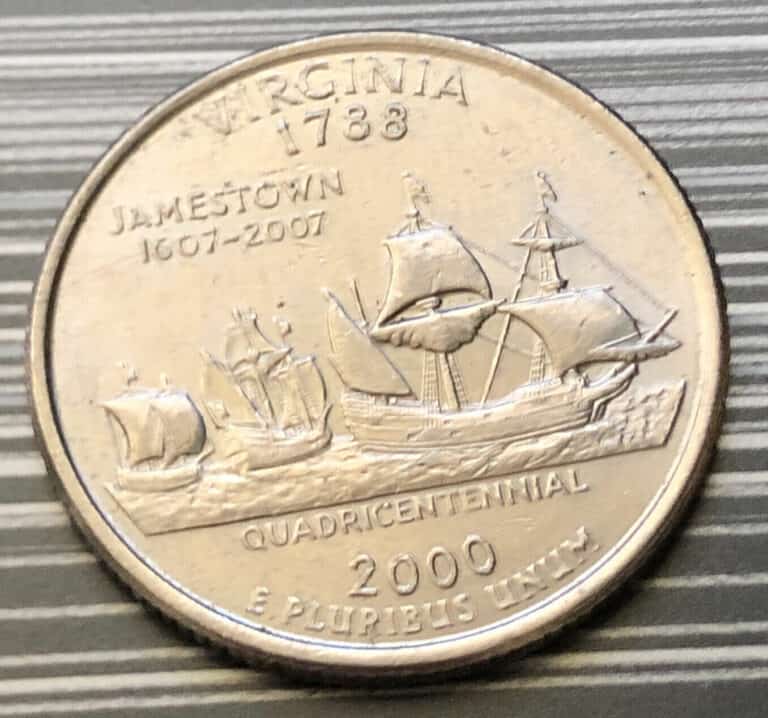
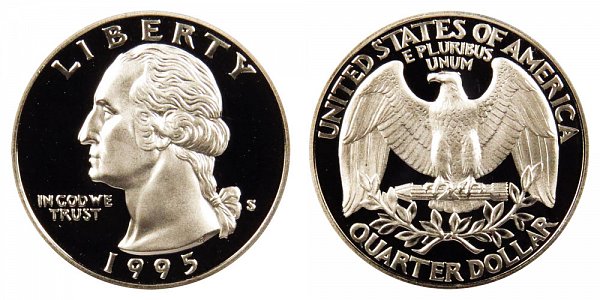
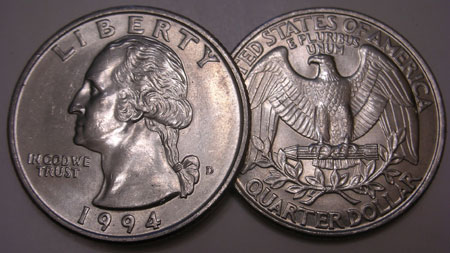
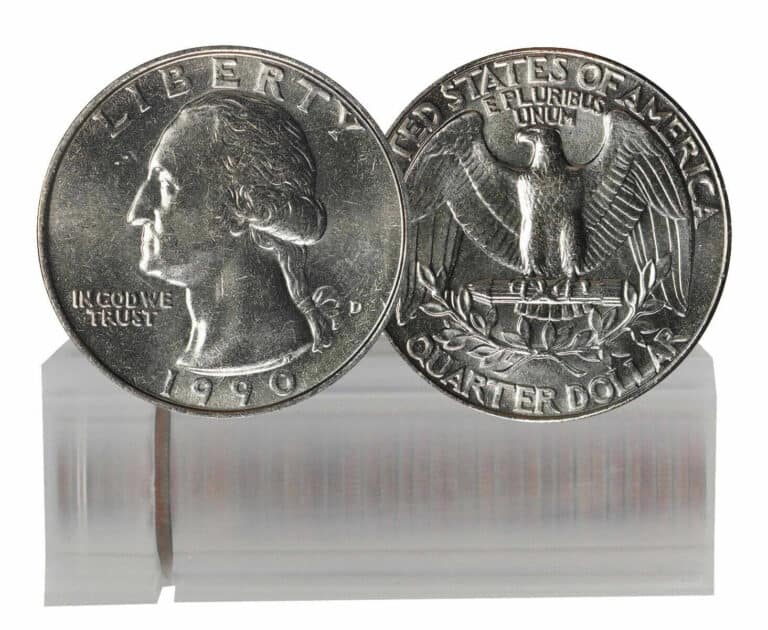
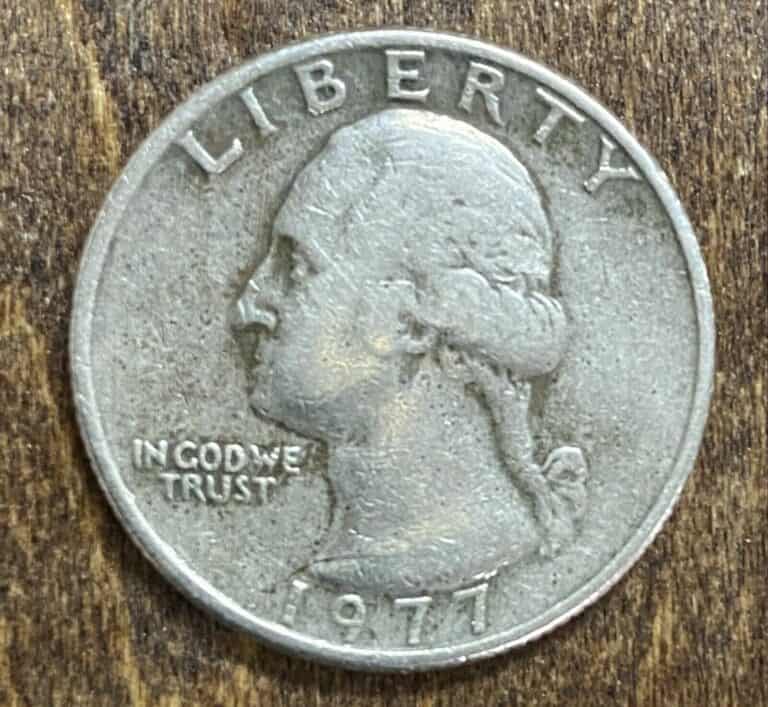
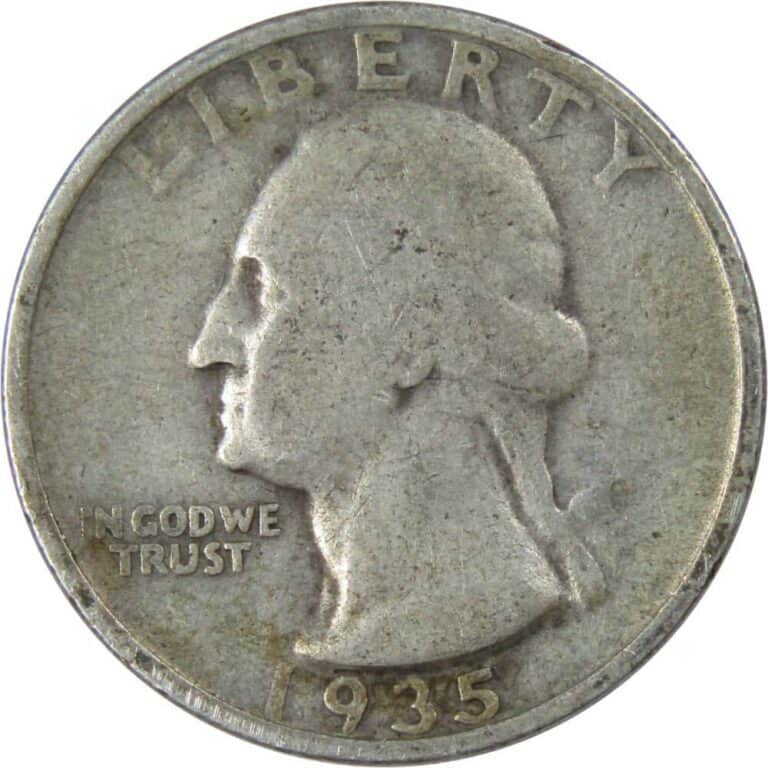
Ty for ur post I have a 1981 p quarter with a die crack I guess is what you would call it ,on the reverse side . It is at very top Thur eagles wing and looks like the other side dropped lower